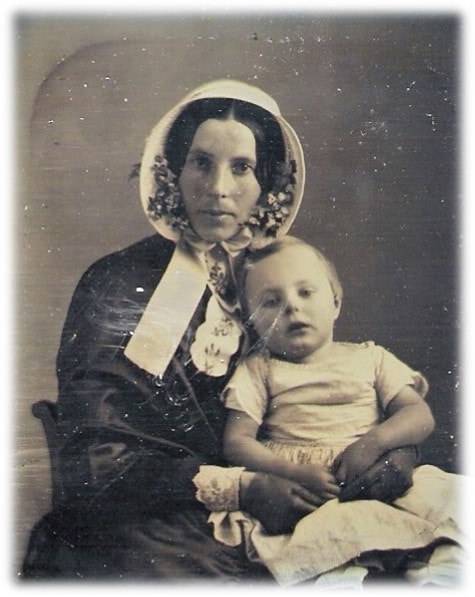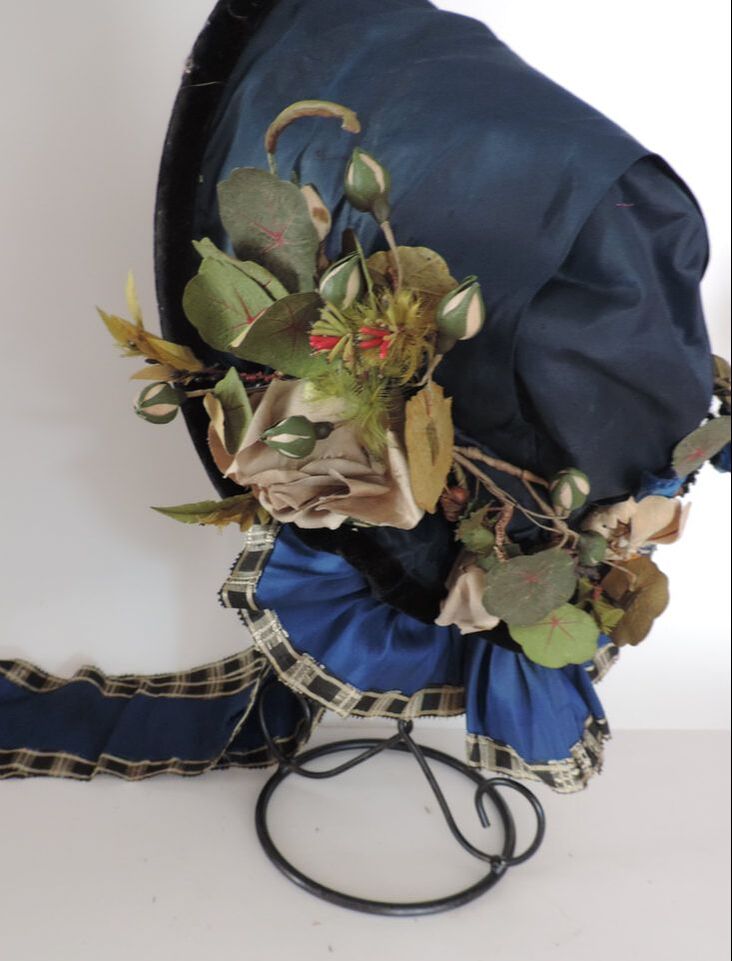|
0 Comments
This late 1840s 1/6th plate daguerreotype has so many wonderful details. The drawn bonnet slightly flares at the brim to allow for many tiny blossoms which frame the face. Her tight sleeves sleeves feature beautiful lace cuffs. I really wonder about the silk dress and fine accessories with a child of this age. He is very still for the image. I imagine him jumping off her lap and running around the studio. Is it nap time or did they bribe him with a sweet?
The truly brilliant aspect of this mid to late 1850's ambrotype is the tinting. Of course, I bought this one because of the blue flowers and ties. If you really look, someone spent a lot of time on this photo. Not only is it tinted in the cheeks, but also her hands and forehead are carefully tinted bringing the sitter to life.
There are so many things that I find magical about this bonnet.
For one, it is blue. This is the first dark blue tight bonnet I have examined from the mid 1850s to early 1860s. Drawn yes, tight no. In fact, when people ask me to make dark blue bonnets, I usually encourage them to choose another color for the silk and add blue trimmings. Blue silk is just not seen on surviving bonnets. The fashion plates don't describe them either. For a tight bonnet, it is in excellent condition. The silk is not shattered and it still has its trimmings. The majority of my extant bonnets are either drawn or straw and no longer have trimmings. The movement of the flowers is truly magical. All the little rose buds and leaves are on thin stems that allow them to move. The ribbons are not woven in one piece. The edging is attached with a tiny seam allowance. So say hello to my unicorn. I am proud to have you in my collection. |
AuthorUsually Dannielle, sometimes Mandy Archives
January 2021
Categories |




 RSS Feed
RSS Feed